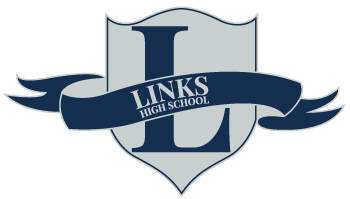The educational project is a strategic tool for defining and making known to the educational community of a school the orientations, priorities for action and expected results to ensure the educational success of all students. It is developed in response to the characteristics and needs of the students attending the school and the community's educational expectations.
The goal of the educational project of a school makes it possible to share, with all its educational stakeholders (students, parents teachers and other school staff, as well as representatives of the community and the School Board), a common vision of findings and challenges to create a mobilization around student-centred goals and objectives. The Educational Project describes what the school intends to do to ensure the educational success and well-being of all its students and the efforts that will be necessary to achieve it.
Goal/Objective:
To read and comprehend basic reading material found in everyday life and to improve students' literacy skills which will include reading and comprehension in all subject areas.
Target:
To assess all students, and to move them from where they are to a higher level of reading and writing comprehension.
Indicators of Success:
- 1. Each student will be tested using the Gates McGinity Reading Evaluation Tests.
- 2. A reading program during a half hour block will be implemented throughout the school as of October 2010.
Interventions:
- 1. Teachers will assist in workshops outside and within the EMSB.
- 2. Each student will be evaluated.
- 3. A reading program will be implemented by August 2010 by all staff.
- 4. Lynn Senecal will be consulted for Advance 5 reading program.
- 5. Susan Waite (speech pathologist) will assist L.I.N.K.S teachers with developing the student's speech and language and the literacy block program.
- 6. Other professionals will be engaged through special project funds to work with certain students in during class time.
Goal/Objective:
Create and maintain persistent electronic IEPs for all students. To develop an IEP that encompasses the students' profile, past history, strengths, areas of improvement, strategies and objectives.
Target:
By January 2010 all students will have an electronic IEP.
Indicators of Success:
Teachers will utilize the IEP to facilitate the transition from year to year to ensure continuity for the students progress.
Interventions:
- All staff will be involved in the creation of IEPs.
- A template for the IEP, based on the Reform with strategies will be created.
- It will be done for each student by January 2010.
- The areas of focus will be: English, French, Mathematics and Social Sciences. There will be an area for the vocational domains in the second year of the success plan.
- A copy will be given to all parents. That document will be discussed and signed by the parents and the administrators.
- IEPs will be reviewed and revised at the end of each school year.
Goal/Objective:
To understand the competencies of Prework Oriented Training Pathway while at the same time helping all students to become well-educated individuals and competent workers.
Target:
To incorporate the QEP Prework Oriented Training Pathway by August 2010.
Indicators of Success:
- Training teachers through workshops.
- Producing Learning and Evaluating Situations (LES).Evaluating and assessing the LES.
- Plan a curriculum that supports the QEP and modifying the program according to each student's special needs. Teachers will use the multiple intelligences approach and incorporate tactile and kinesthetic activities for all lessons.
- Report cards and the IEP will reflect the requirements of the Prework Oriented Training Pathway.
Interventions:
- Teachers in pilot schools where LES are implemented will offer training in LES for teachers at L.I.N.K.S.
- Pedagogical Services will offer workshops and assist in planning and assist L.I.N.K.S teachers for the QEP and IEP.
- Organize PED days to offer specific strategies and approaches to teachers to deal with students with learning and intellectual deficiencies.
- Teachers using LES in the classroom.
- Change the report card to identify and meet the needs of each student and the competencies of the QEP.
- Formulate an overall package of checklists to evaluate skills and attitudes of each student.
What we have to do as school staff to prepare for implementing the interventions identified in the Success Plan.
Short-term goals/objectives:
Continue to expand our knowledge of the job market in the area of works skills. Preform regular evaluatios and updats of all our programs during our weekly MDT meetings. Make use of the expertise of our resource persons and avail us to selected seminars at McGill in relation to curriculum design.
All teachers will receive professional development in the following areas:
- 1. Implementing a Literacy block program as a school-wide project
- 2. Modifying the Cycle 1 Regular High School Program for our students
- 3. Creating and writing Learning Evaluation Situations
- 4. Understanding the content of the Cycle 1 Regular High School Program and the Prework Oriented Training Pathway.
- 5. Implementing the new programs of study in their classrooms.
- 6. Evaluation and assessment of students.
Long-term goals/objectives:
- A. Sensitize student services personnel and guidance counselors to the clientele that we service.
- B. Sensitize the community (work establishments) as to the value of our students as possible full-time employees.
- C. Create a bank of potential work placements for our Work-Study Programs


